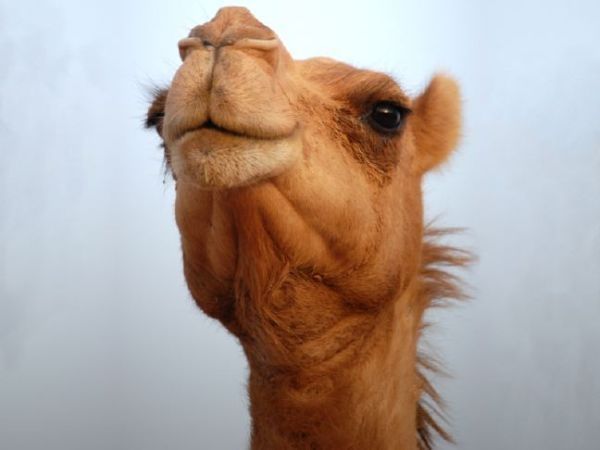|
|
Camels Around The World
|
Camel milk is a staple food of desert nomad tribes and is considered a whole food, nomads requiring nothing but camel milk for up to six months. Camel milk is rich in vitamins, minerals, proteins and immunoglobins. It is lower in fat and cholesterol fat than cow milk. It is said to have many healthful properties and is used as a medicinal product in India, Mongolia, Kazakhstan, Africa and the Middle East. It is also used as an aphrodisiac in these countries, an example being Ethiopia. Bedouins believe that the curative powers of camel milk are enhanced if the camel's diet consists of certain desert plants. Camel milk can readily be made into a drinkable yogurt, but does not set due to lesser milk solids than cow or goat's milk. Camel milk cream can be separated and made into butter or cheese but the yields will be low in comparison to buffalo or cow cream, again due to the low fat and solids content.
Camel milk cannot be made into butter by the traditional churning method. It can be made if it is soured first, churned, and a clarifying agent added, or if it is churned at 24–25 °C (75–77 °F), but times vary greatly in achieving results. Until recently, camel milk could not be made into camel cheese because rennet was unable to coagulate the milk proteins to allow the collection of curds. Under the commission of the FAO, Professor J.P. Ramet of the École Nationale Supérieure d'Agronomie et des Industries Alimentaires (ENSAIA) was able to produce curdling by the addition of calcium phosphate and vegetable rennet. The cheese produced from this process has low levels of cholesterol and is easy to digest, even for the lactose intolerant.. The sale of camel cheese is limited owing to the small output of the single dairy currently producing camel cheese and the absence of camel cheese in most camel cultures. Cheese imports from countries that traditionally breed camels are difficult to obtain due to restrictions on dairy imports from these regions.
• Meat
A camel carcass can provide a substantial amount of meat. The male dromedary carcass can weigh 400 kg (900 lb) or more, while the carcass of a male Bactrian can weigh up to 650 kg (1,400 lb). The carcass of a female camel (or she-camel) weighs less than the male, ranging between 250 and 350 kg (550 and 770 lb). The brisket, ribs and loin are among the preferred parts, but the hump is considered a delicacy and is most favored. It is reported that camel meat tastes like coarse beef, but older camels can prove to be very tough and less flavorful. The meat from older camels is best prepared by slow cooking. Camel meat is low in fat, and can thus taste dry. The Abu Dhabi Officers' Club serves a camel burger, as this allows the meat to be mixed with beef or lamb fat, improving both the texture and taste. In Karachi, Pakistan the exclusive Nihari restaurants prepare this dish from camel meat, while the general restaurants prepare it with either beef or water buffalo meat.
|
|









